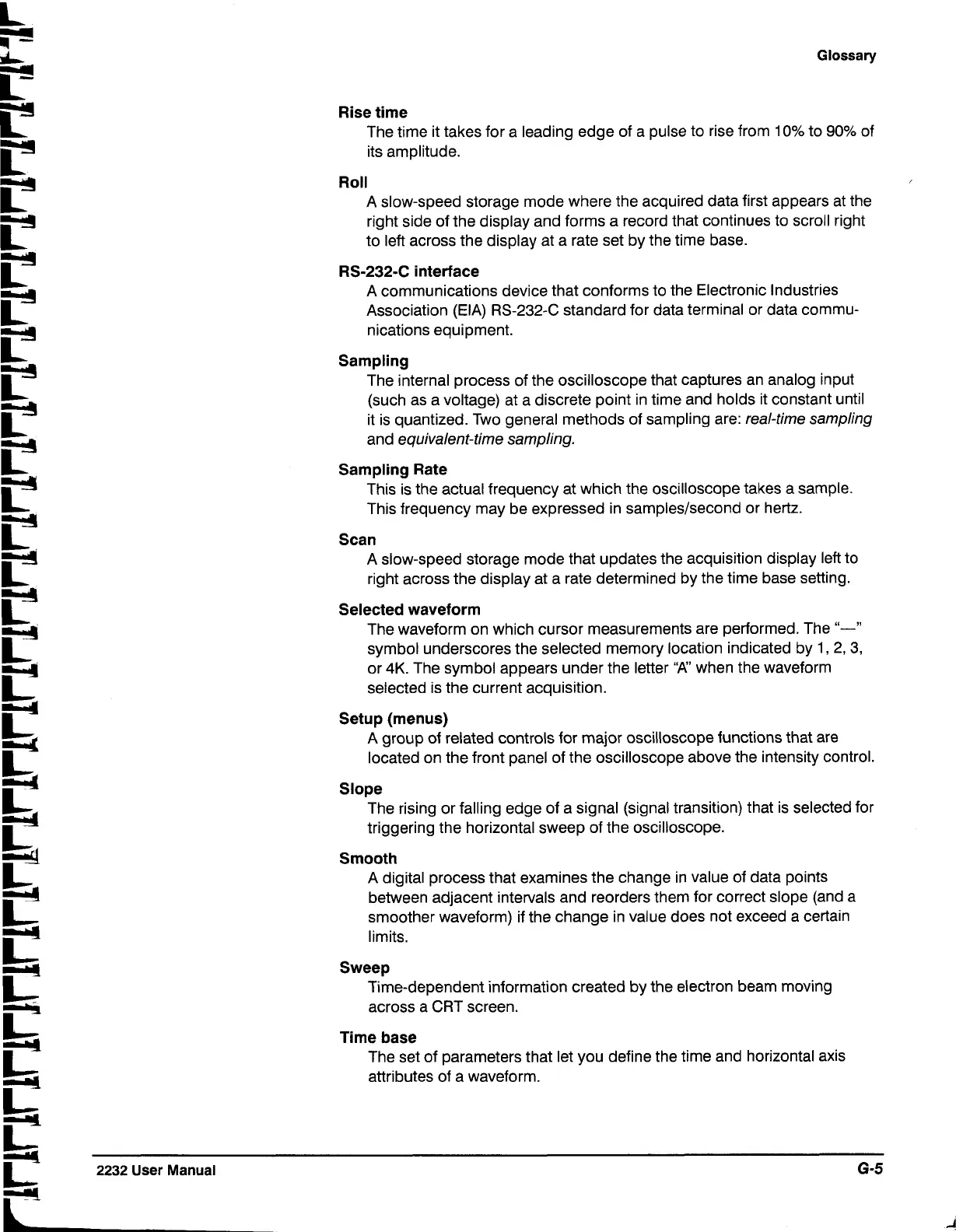Glossary
Rise time
The time it takes for a leading edge of a pulse to rise from 10% to 90% of
its amplitude.
Roll
A slow-speed storage mode where the acquired data first appears at the
right side of the display and forms a record that continues to scroll right
to left across the display at a rate set by the time base.
RS-2324 interface
A communications device that conforms to the Electronic Industries
Association (EIA) RS-232-C standard for data terminal or data commu-
nications equipment.
Sampling
The internal process of the oscilloscope that captures an analog input
(such as a voltage) at a discrete point in time and holds it constant until
it is quantized. Two general methods of sampling are: real-time sampling
and equivalent-time sampling.
Sampling Rate
This is the actual frequency at which the oscilloscope takes a sample.
This frequency may be expressed in
samples/second or hertz.
Scan
A slow-speed storage mode that updates the acquisition display left to
right across the display at a rate determined by the time base setting.
Selected waveform
The waveform on which cursor measurements are performed. The
"-"
symbol underscores the selected memory location indicated by 1,2,3,
or
4K.
The symbol appears under the letter
'R"
when the waveform
selected is the current acquisition.
Setup (menus)
A group of related controls for major oscilloscope functions that are
located on the front panel of the oscilloscope above the intensity control.
Slope
The rising or falling edge of a signal (signal transition) that is selected for
triggering the horizontal sweep of the oscilloscope.
Smooth
A digital process that examines the change in value of data points
between adjacent intervals and reorders them for correct slope (and a
smoother waveform) if the change in value does not exceed a certain
limits.
Sweep
Time-dependent information created by the electron beam moving
across a CRT screen.
Time base
The set of parameters that let you define the time and horizontal axis
attributes of a waveform.
